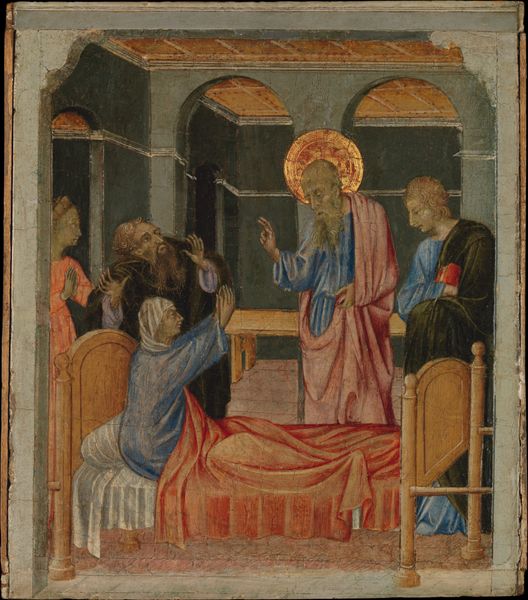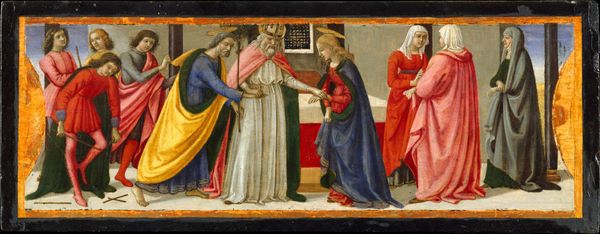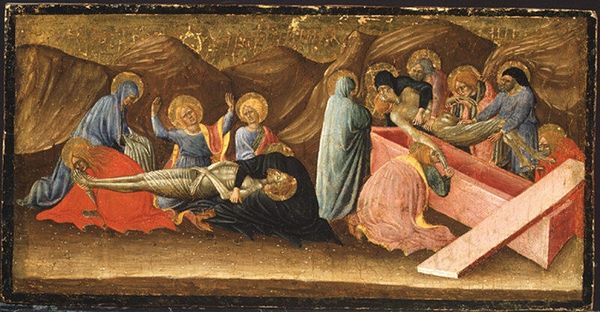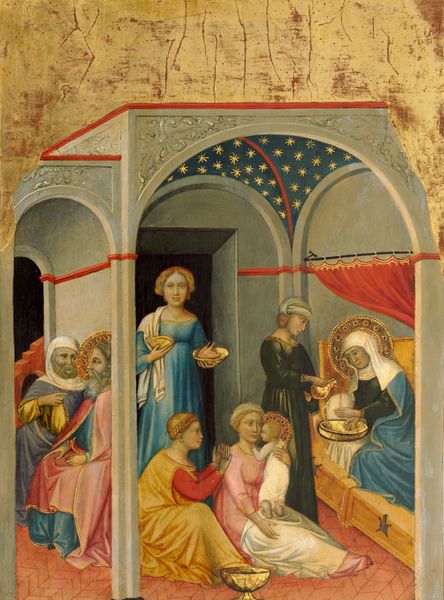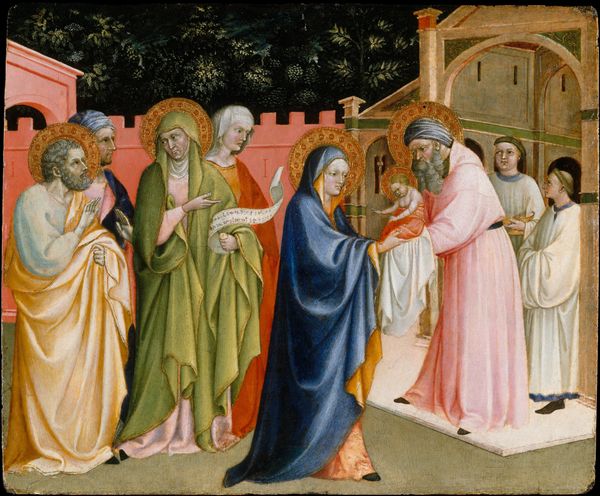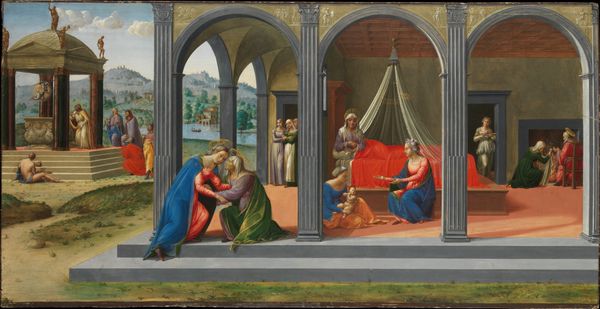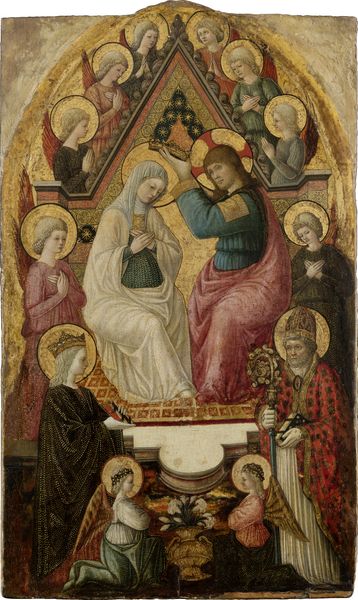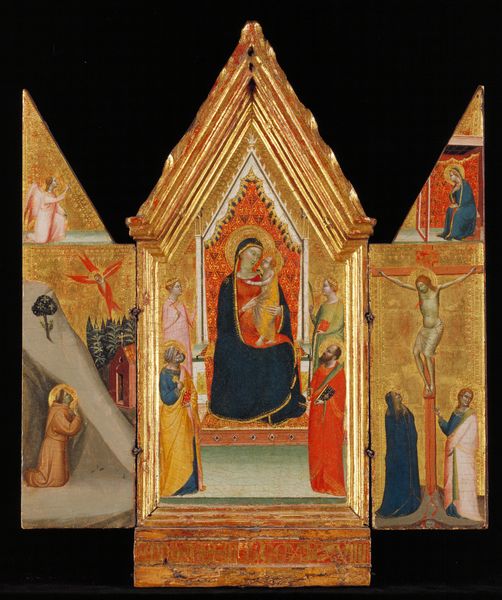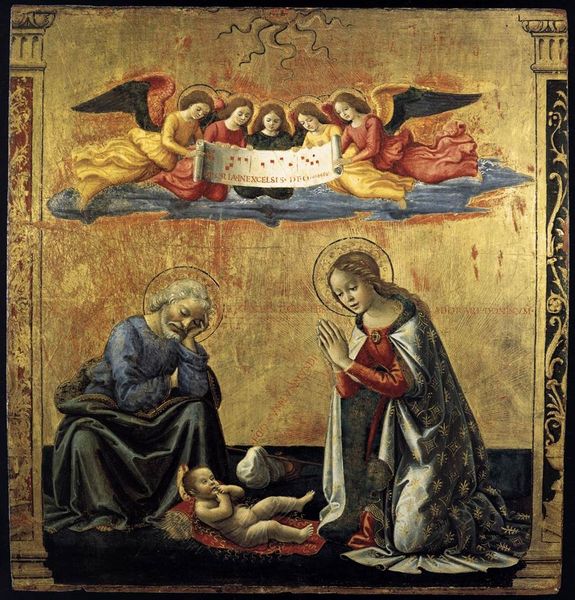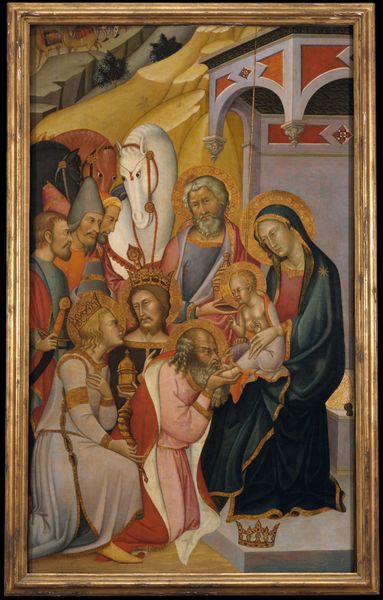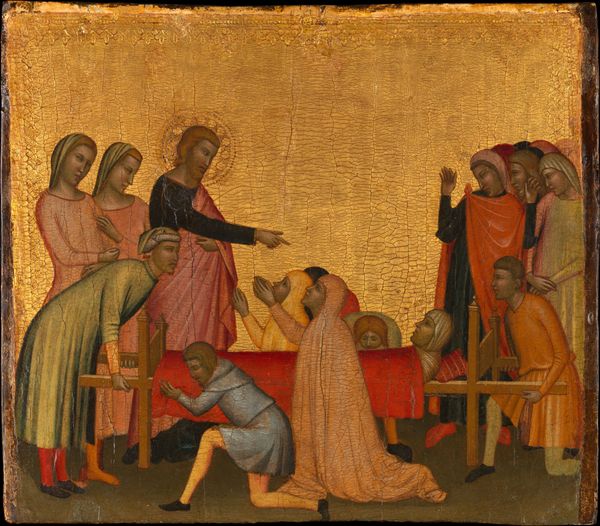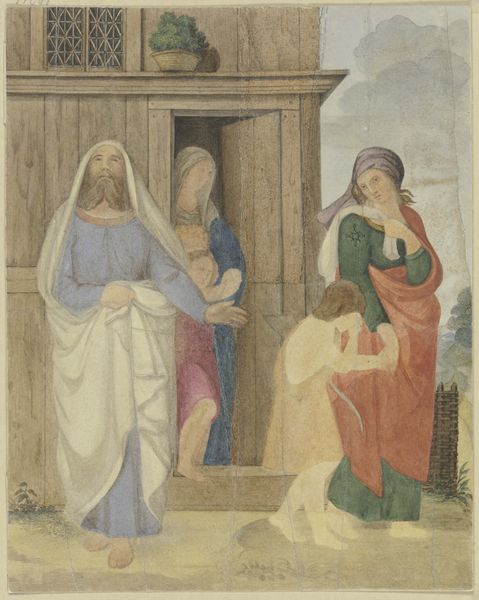
The Birth and Naming of Saint John the Baptist 1450 - 1460
0:00
0:00
panel, tempera, painting
#
portrait
#
medieval
#
panel
#
narrative-art
#
tempera
#
painting
#
figuration
#
oil painting
#
men
#
history-painting
#
italian-renaissance
#
early-renaissance
#
miniature
Dimensions: Overall, with engaged (modern) frame: 9 5/8 × 18 7/8 in. (24.4 × 47.9 cm) painted surface: 8 1/8 × 16 7/8 in. (20.6 × 42.9 cm)
Copyright: Public Domain
Editor: Here we have "The Birth and Naming of Saint John the Baptist," a tempera on panel, created by Sano di Pietro around 1450-1460. It's currently housed at the Metropolitan Museum of Art. What strikes me most is the compressed space and how each segment is clearly defined yet connected through color. How do you interpret this work, focusing on its formal aspects? Curator: The composition immediately invites a formalist reading. Consider the tripartite division, almost like a triptych collapsed into a single plane. Notice the columns – they serve not only as architectural elements but also as visual dividers. The palette, while somewhat limited, utilizes strong reds and blues to create a balanced, almost symmetrical effect. Observe how the artist employs a shallow depth of field, typical of the Early Renaissance, which pushes the figures to the forefront, emphasizing their arrangement. How do the gestures contribute to this reading? Editor: I see it now. The gestures, especially the pointing and writing, seem to guide the eye across each defined area, emphasizing their interrelation rather than individual importance. The flat, almost decorative application of color keeps it from being naturalistic, directing attention instead to the narrative as a carefully staged scene. Curator: Precisely. The figures are flattened, almost stylized, reducing them to shapes and colors within the broader design. Consider also the repeated circular motifs - the halos, the basin - are these elements merely decorative, or do they serve to unify the composition further? Editor: I think it contributes to a visual harmony, drawing attention away from individual elements to the composition as a whole. It’s as if the artist wants us to read the scene as a structured tableau rather than a realistic depiction of a birth. Curator: A carefully arranged sequence. This close examination demonstrates how we may reveal so much meaning through the arrangement of form alone. Editor: Yes, I’m beginning to understand how the interplay of color, shape, and spatial organization shapes my reading of the narrative, maybe even more so than the actual subject matter. Curator: Indeed, an awareness of the formal elements brings this narrative to life.
Comments
No comments
Be the first to comment and join the conversation on the ultimate creative platform.
